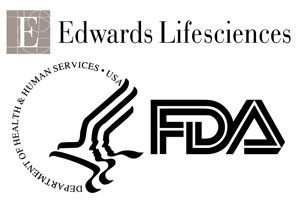
Following a month-long U.S. Food and Drug Administration (FDA) inspection of the Edward’s Lifescience manufacturing facility in Draper, Utah, the agency issued a detailed warning letter to the medical device maker. The inspection also prompted a couple of recalls and a letter to investors. In its letter, the agency cited seven manufacturing violations. Some, according […]
 Following a month-long U.S. Food and Drug Administration (FDA) inspection of the Edward’s Lifescience manufacturing facility in Draper, Utah, the agency issued a detailed warning letter to the medical device maker. The inspection also prompted a couple of recalls and a letter to investors.
Following a month-long U.S. Food and Drug Administration (FDA) inspection of the Edward’s Lifescience manufacturing facility in Draper, Utah, the agency issued a detailed warning letter to the medical device maker. The inspection also prompted a couple of recalls and a letter to investors.
In its letter, the agency cited seven manufacturing violations. Some, according to a MassDevice.com report, led to recalls. Violations included “failure to validate” manufacturing processes that the FDA said, “cannot be fully verified by subsequent inspection and test.” The inspectors also noted six customer complaints concerning Edwards’ QuickDraw cannulae, which broke during cardiac procedures. The inspectors pointed out that Edward’s Lifesciences does not appropriately validate its ovens’ temperatures, which is critical to maintain proper manufacturing bonding, MassDevice.com wrote.
Concerning medical devices manufactured at the Edward’s Lifesciences facility, “the inspection revealed that these devices are adulterated … in that the methods used in, or the facilities or controls used for, their manufacture, packing, storage, or installation are not in conformity with the current good manufacturing practice requirements of the Quality System regulation,” the FDA stated.
In a March 15 response, MassDevice.com wrote that, Edward’s Lifesciences said broken cannulae were the result of physician error, “in spite of the complaint investigations concluding the bonds were breaking due to inadequate oven temperatures,” the FDA responded in its letter. Edward’s Lifesciences also said it had stopped manufacturing the QuickDraw cannulae and initiated a global recall and that it had recalled its ProPlege Peripheral Retrograde Cardioplegia device kits during the inspection, as well, according to the FDA letter.
Concerning the ProPlege Peripheral Retrograde Cardioplegia device kits, the FDA stated, “We have reviewed your March 15 and April 30 responses, and also acknowledge that you initiated a recall of the ProPlege Peripheral Retrograde Cardioplegia Device Kits (PR9) during the inspection. However, we cannot fully evaluate the adequacy of your response at this time because you did not provide any time frames for the systemic corrective actions you indicated for your Design Verification and Design Validation activities, and these corrective actions will have to be evaluated once completed.”
The FDA wrote in response to more than one issue, “We have reviewed your … responses … we cannot determine the adequacy of your corrective actions at this time.”
Concerning a particulate issue, the FDA stated, “… we have reviewed your March 15 and April 30 responses. We remain concerned that pouch seal visual acceptance criteria continue to include seals ranging from clear to ‘hazy whitish’ and also that seals with embedded particulate may continue to be accepted. During the inspection, an employee of your firm acknowledged that seal breaches could be missed during visual inspection of ‘hazy” seals.’”
The FDA concluded that, “The specific violations noted in this letter and in the Inspectional Observations, FDA 483, issued at the close of the inspection may be symptomatic of serious problems in your firm’s manufacturing and quality management systems,” and advised Edward’s Lifesciences that it has 15 days to respond to the letter.


